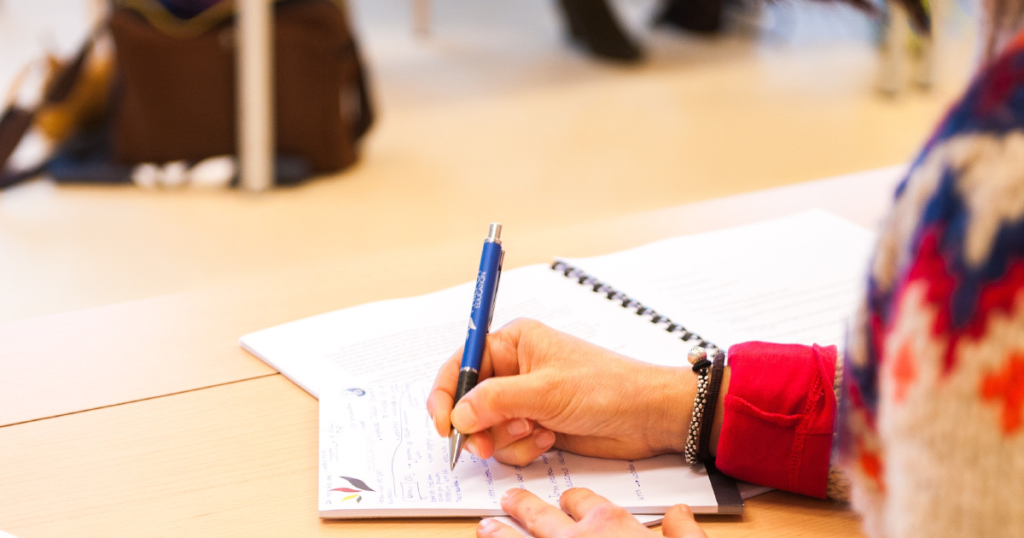On Monday, the Professional Educator Licensing and Standards Board (PELSB) announced the first draft of revised rules for the standards educators learn in Minnesota teacher preparation programs. This is the first time in twenty years these standards have been substantially revised.
The new draft of these “Standards of Effective Practice” (SEPs)—which set forth the knowledge and skills that all teachers must demonstrate to receive their license—represents a substantial departure from what’s currently in rule. It goes far beyond tweaking existing standards, and reimagines what equitable, student-centered teaching and learning can and should look like.
Education Evolving has long asserted that shifting to more equitable, student-centered designs for learning will require changing the roles of teachers and the form of teacher preparation. Earlier this year, as PELSB prepared to enter rulemaking around Minnesota’s teacher standards, we hosted a listening session bringing together educators with leaders from PELSB, circulated a survey to teachers in our networks, and ultimately published a memo of recommendations for PELSB.
Overall, we commend PELSB for an extremely bold first draft of the new SEPs, and for the extent to which they reflect the feedback we heard from educators and our recommendations.
What’s in the new draft teacher standards?
To summarize the most significant changes, the draft of the standards (PDF here, see pages 39 through 47) includes the following, consistent with the recommendations and rationale in EE’s June memo:
- A sharpened focus on educational equity, including the importance of supporting positive identity development, advancing literacy and second language acquisition, recognizing dehumanizing biases, and practicing cultural humility and critical self-reflection;
- Substantially more emphasis across the standards on involving students and community in learning, and adapting learning to meet each learner’s unique assets and needs;
- Much greater emphasis on teachers demonstrating competencies rather than just knowledge—namely, the vast majority of the standards in the draft begin with the phrase “be able to” (not just “understand”); and
- A reduction in the total number of standards (from 125 to 65) to focus on what matters most, and greater use of concise and concrete language to describe each standard.
To illustrate some of these changes, a few of the new standards that stood out to us include:
- “Understand the relationship between motivation and engagement and know how to design learning experiences using strategies that build learner self-direction and ownership of learning” (Standard 7)
- “Understand that students bring assets for learning based on their individual experiences, abilities, talents, prior learning, and peer and social group interactions, as well as language, culture, family, and community values” (Standard 9)
- “[Be able to] collaborate with students to design and implement relevant learning experiences, identify their strengths, and access family and community resources to develop their areas of interest” (Standard 33)
- “[Be able to] assist learners as they recognize and process dehumanizing biases, discrimination, prejudices, and institutional and personal racism and sexism” (Standard 41)
- “[Be able to] reflect on the ability for implicit bias to shape discretionary spaces and the role this can play in reproducing or disrupting systems of oppression in schools” (Standard 54)
In reflecting on the standards, Alex Liuzzi, executive director of PELSB, said, “These standards are essential in shaping how new teachers are trained in Minnesota. This rulemaking process gives PELSB and all education stakeholders the opportunity to ensure the knowledge, skills, and dispositions needed to be an effective teacher are codified in Minnesota rule. We’ve focused our first draft on important areas of mental health, reading acquisition, cultural humility, and multilingual learners.”
What’s next?
In addition to announcing the new rules, PELSB also kicked off on Monday a 60-day public comment period, during which any person or group may submit comments on the new rules.
After the public comment period closes PELSB will consider feedback received and publish a second draft, likely later this year or early 2020. PELSB anticipates additional cycles of rule drafts followed by public comment periods, with a goal of finalizing the new rules by June 2020.
While we commend this first draft, Education Evolving has suggestions for building on this good work. We are currently working with a group of educators on suggestions that we will submit via public comment. We invite educators interested in advancing more equitable, student-centered teaching practices to reach out and share your thoughts, as we prepare our submission.
We will continue to report on the progress of SEP rulemaking on this blog in the coming months.
Found this useful? Sign up to receive Education Evolving blog posts by email. Questions? Contact EE’s executive director Lars Esdal at lars@educationevolving.org.
